|
| |
FAMILY COENAGRIONIDAE
- This page contains information and pictures about Blue Riverdamsels that we found in the Brisbane area, Queensland, Australia.
They are also known as Blue Sprite
Damselflies.
-
 - Male, body length 38mm
-
- Blue Sprite
Damselflies are one of the most common damselflies found in Brisbane waters.
They can easily be found near running water or still water. They usually rest on
the plants either in the middle of ponds or at the water edges. In a sunny
winter day, they may be the only damselfly still flying over the water, although
only a few of them can be seen. In summer, large number of them completing for a
good perching position with other damselflies. The pictures in this
page are mostly taken at Wishart along Bulimba Creek and at the large ponds in
Mt Coot-tha Botanic Garden.
-
-
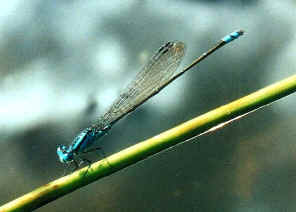
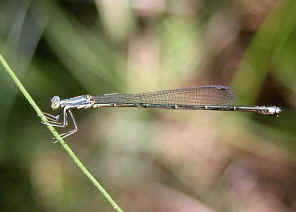
- Male Female
-
- The male damselfly is brightly blue in colour with black pattern on
abdomen. Its head, face and eyes are blue too.
- Quite a number of damselfly species found in Brisbane are in blue colour
and look similar. They includes the Common Bluetail
and the Eastern Dart.
Our Australian Dragonfly Society President, Deniss Reeves, advised
that we can tell if it is a Blue Riverdamsel by its Blue eyes and bright face. The male Blue
Riverdamsel has its blue thorax with black marks. Its long and slender abdomen is
black in colour with blue rings. There is the blue tip at the end of abdomen.
-
- The females are pale blue-grey to greyish-green in colour. When Blue
Riverdamsels are at rest, they held their wings closely folded
up vertically over their thorax.
-
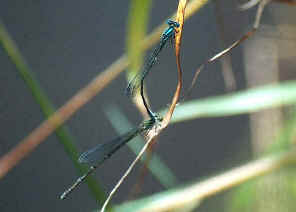
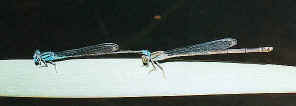
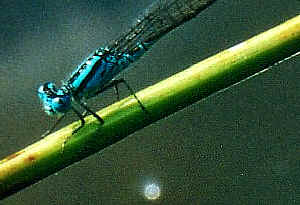 -
- Above pictures showing the male and female Blue Riverdamsels in tandem position. More
information about damselfly reproduction can be found on the Mating Behaviour pages.
-
-
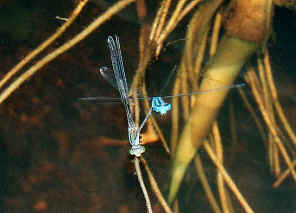 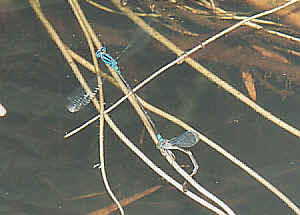
- Female laying eggs with male still in tandem position
- After mating, the female will
return to the water and lay her eggs, usually with the male still in tandem
position.
-
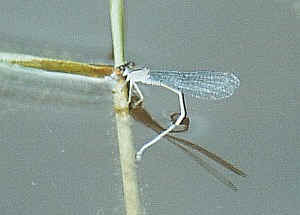 -
- Damselflies lay their eggs in the plants under the surface of
water. Female damselflies have their blade-like ovipositor for making an
opening in the plant for her eggs. Female lays eggs usually with male still
in tandem, or sometimes alone.
-
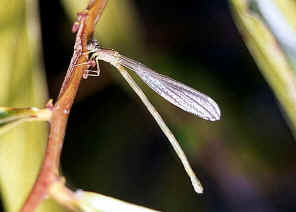 -
- A newly emerged Blue Riverdamsel, its
body colour is not normal yet.
-
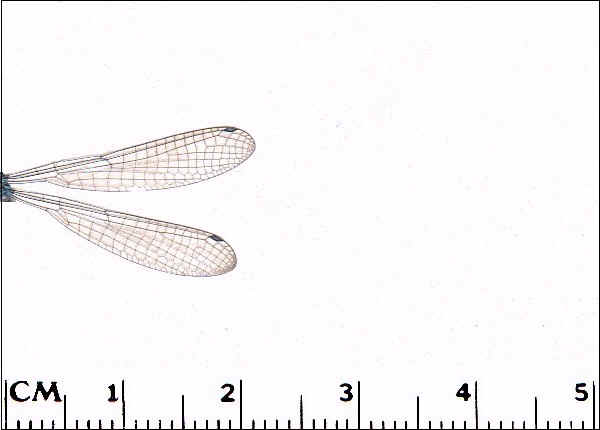 - Wings of Blue Sprite Damselfly
- Reference:
- 1. The Australian Dragonflies - CSIRO, Watson, Theisinger & Abbey,1991,
p133.
- 2. A Field Guide to Dragonflies of South East Queensland - Ric
Nattrass, 2006, p40.
- 3. The Complete Field Guide to Dragonflies of Australia - CSIRO, GŁnther Theischinger and John Hawking, 2006,
p84.
-
Back to Top
| |
|











